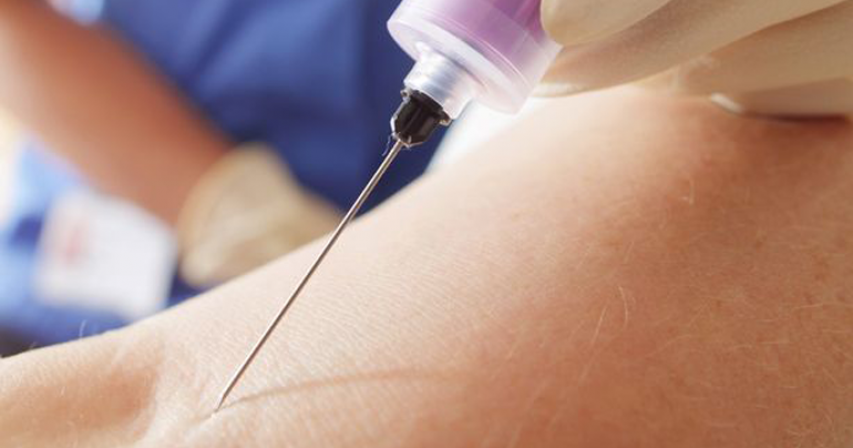Scientists find new way to take blood tests - without a painful needle
- 4 years ago

The new type of blood test can be performed by a medic using smartphone to take pictures of the patient's eyelids instead of using needles to draw blood
A tool to measure haemoglobin – without drawing blood – has been created by scientists, using a phone.
The ground-breaking method uses pictures of a person’s eyelids to assess the levels.
Being able to perform one of the most common clinical lab tests without drawing blood could help reduce the need for in-person clinic visits.
That would make it easier to remotely monitor critical patients and improve care in countries with limited access to testing laboratories.
To take the measurement, the patient pulls down the inner eyelid to expose the small blood vessels underneath.
A medic then uses a smartphone app created by the scientists to take pictures of the eyelids.
Prof Young Kim, of Purdue University, Indiana, said: “Our new mobile health approach paves the way for bedside or remote testing of blood haemoglobin levels for detecting anaemia, acute kidney injury and haemorrhages, or for assessing blood disorders such as sickle cell anaemia.
"The Covid-19 pandemic has greatly increased awareness of the need for expanded mobile health.”
Professor Kim and colleagues from the University of Indianapolis, Vanderbilt University School of Medicine in the US and Moi University School of Medicine in Kenya used software to transform a smartphone camera into a hyperspectral imager.
The tool reliably measures haemoglobin levels - a measure of the oxygen-carrying capacity of blood - without the need for any hardware modifications or accessories.
A pilot clinical test showed that prediction errors for the smartphone technique were within five to ten per cent of those measured with clinical laboratory blood.
Professor Kim said: "This new technology could be very useful for detecting anaemia, which is characterised by low levels of blood haemoglobin.
"This is a major public health problem in developing countries, but can also be caused by cancer and cancer treatments."
The pilot test uses software to virtually convert photos acquired with low-resolution systems such as a smartphone camera into high-resolution digital spectral signals.
The team selected the inner eyelid as a sensing site because it is easy to access and has relatively uniform redness, nor is it affected by skin colour.
After undergoing tests with over 150 volunteers, the results showed that the mobile health test could provide measurements comparable to traditional blood tests.
Comments